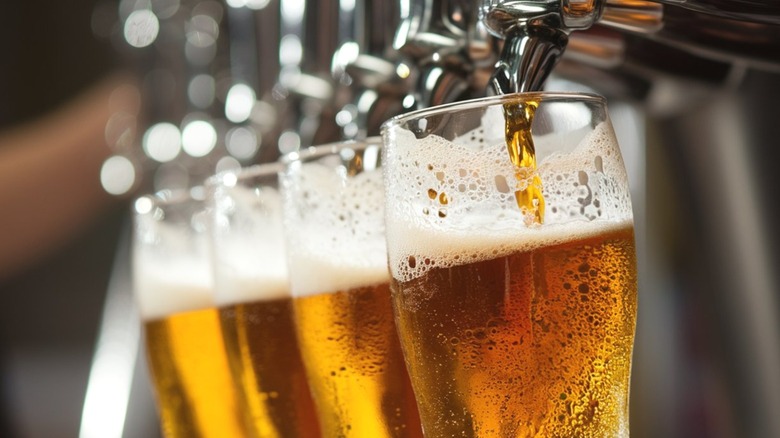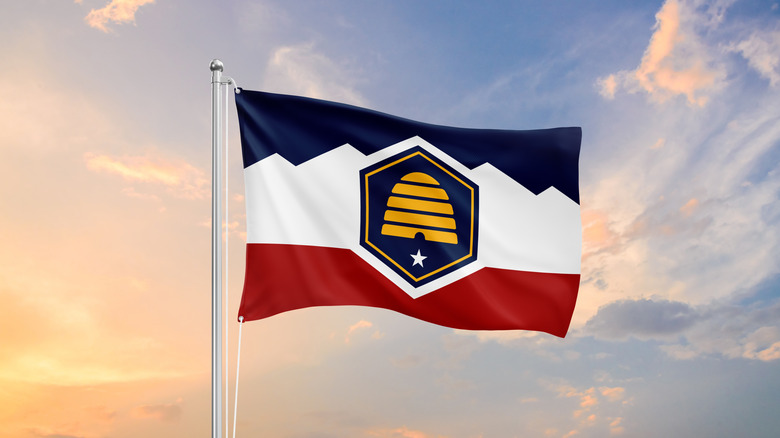The U.S. State That Drinks The Least Amount Of Alcohol Is In The West
You've probably heard of "dry counties" and "wet counties". That is, counties in the United States that prohibit or limit the sale of alcohol versus those without any restrictions. You may also know that most, if not all, of these dry counties are located in the South. Most famously, Lynchburg, Tennessee, home to the Jack Daniel's distillery, is located in a dry county, although you're still allowed to sample the wares at the factory itself (just watch out for the fungus). So when faced with the question of which U.S. state drinks the least amount of alcohol, you'd probably assume it's in the South. Perhaps Arkansas, which has the most dry counties of any state with 34? Maybe Kansas, home of the legendary temperance advocate Carrie Nation?
Nope! The answer is Utah, for one very simple reason: Mormons. Although Mormons no longer constitute a majority of the state's population, the Church of Jesus Christ of Latter-day Saints continues to exert great influence over the region's politics. And since the Church advises against consuming alcohol, the state's alcohol consumption reflects that. According to World Population Review, Utah consumes just 1.36 gallons of ethanol per capita on a yearly basis. The next driest state, West Virginia, consumes 1.82 gallons per capita. New Hampshire, with its lack of sales tax on alcohol, consumes the most.
Utah has some of the most restrictive alcohol policies in America
While Utah doesn't have any dry counties, its alcohol laws are nonetheless rather strict. It is one of 17 "control states", meaning that the state government has a monopoly on alcohol sales — every liquor store is run by the state of Utah. Grocery stores can only sell alcoholic beverages that are up to 5% alcohol by volume, and restaurants can only sell them if they're served with food.
Even more unusual are "Zion Curtains," which Utah once required by law in restaurants. These are partitions, usually made of frosted glass, that separate bartenders from the rest of the restaurant, including the customer who ordered a drink in the first place. The idea was ostensibly to protect other customers, including children, from seeing alcohol. In practice, it served as a major deterrent, because nobody wants to stare at a semi-opaque piece of glass their whole night out. A law in 2017 loosened these laws somewhat, but other regulations apply — kids can't come within 10 feet of a bar, for instance.

